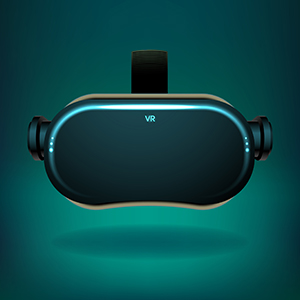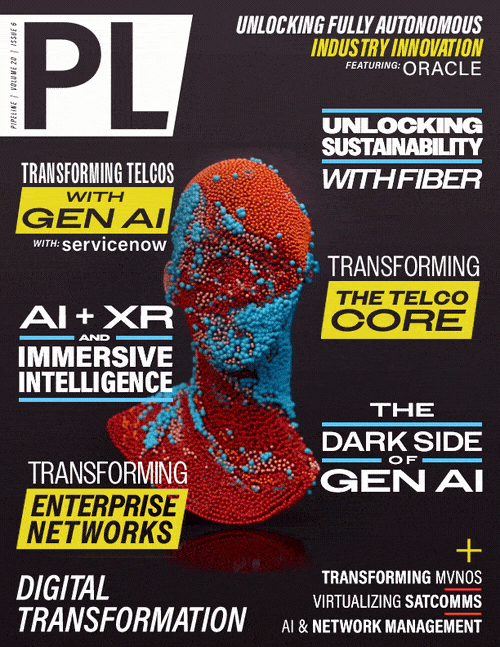AI AR/VR and Immersive Intelligence
By: Dijam Panigrahi

Artificial Intelligence (AI) tools are becoming more mainstream today, and an increasing number of manufacturers and professionals, such as designers, engineers, and robotics operators are
looking at ways to incorporate various AI-driven technologies into their workflows.
However, leading companies today are realizing that AI alone isn’t enough to gain a true competitive edge. Through the integration and use of AI, along with immersive mixed reality, such as
Augmented Reality (AR) and Virtual Reality (VR), a new suite of solutions is now being leveraged for enterprises and manufacturers, known as Immersive Intelligence.
The Rise of Automation Technology Using AI
Automation technology using AI can be programmed to complete logical processes for a particular business. With the already large array of technological applications and programs businesses use,
what makes AI technology the next best thing? First, AI technology is flexible. It can be used by many industries in their own unique way, such as aiding them in data mining, targeted marketing
or constructing precision-based financial models.
AI today can be found in markets such as medical equipment manufacturers; construction equipment producers; tech; telecom; and engineering firms for aerospace and automotive, mining projects, utilities, and oil and gas. Not only is the technology flexible in its implementation, but also in what it is compatible with. This technology can work with diverse business applications, and with structured or unstructured data.
Combining Generative AI with AR/VR
Generative AI is the latest technology driven by AI that uses natural language processing. It leverages deep learning algorithms to enable users to converse with chatbots. What has captured the attention of designers and engineers is that it is an advanced system that can understand complex questions and provide very accurate answers almost immediately. Because it was developed with conversational AI capabilities, it can immediately comprehend user queries and generate natural-sounding responses that are tailored to the conversation context. It also has built-in memory capability that stores information from past conversations to better respond to subsequent messages.
However, engineers and designers are also realizing that many projects throughout vertical industries require more than just the development of text and responding to prompts. That is why these
professionals are combining the powers of AI tools along with other progressive immersive technologies like AR/VR. They are building AI-models like ChatGPT to help create virtual worlds in the
metaverse to run simulations and increase productivity/efficiency metrics. More specifically, AI tools like ChatGPT and the metaverse can help create 3D environments with digital twins that
replicate the real world, and the data used can be harnessed for analysis, running simulations, and interacting with data more efficiently.
However, there are still some limitations with ChatGPT. As an example, when engineers are designing tools or products, AI technologies cannot recognize when physical items move and must be
manually told that it is in a different location. That being said, technology such as ChatGPT can significantly assist with coding the virtual 3D world and running simulations. Historically this
coding has been done manually, but with AI tools the developer time can be increased ten-fold.
Developers writing code will benefit because generative AI can create the vast majority of the code, while developers are then left to use resources to debug much less of the code. They can
actually spend more time on innovation. Workers on the manufacturing floor will then better understand the code and language produced by generative AI through its natural language ability. As an
example, the tools can provide alerts that increase safety standards when entering a hazardous section of the plant floor or when operating heavy equipment. Training and test simulations
conducted within metaverse environments will also benefit from increased safety practices.
Generative AI will also play a leading role in helping to create code and language used in the development of digital twins – the virtual world where people, consumers, and workers all gather to communicate, collaborate, and share through a virtual presence on any device. This means companies will build immersively intelligent virtual spaces, and it will allow employees to virtually collaborate using their digital twin through chats, emails, video calls and even face-to-face meetings.
The power of simulation will be an exact game-changer for enterprises and businesses throughout the metaverse in a variety of industries, such as optimizing production planning in the automotive
sector, accelerating design in the aerospace industry, improving overall production efficiency for manufacturers, and increasing accuracy for consumer-packaged goods companies. Many companies are
poised to leverage virtual simulation to make better decisions and generate the greatest return on investment. Several other examples how generative AI will benefit designers, engineers and
manufacturers in an immersive intelligent arena leveraging AR/VR include:



















